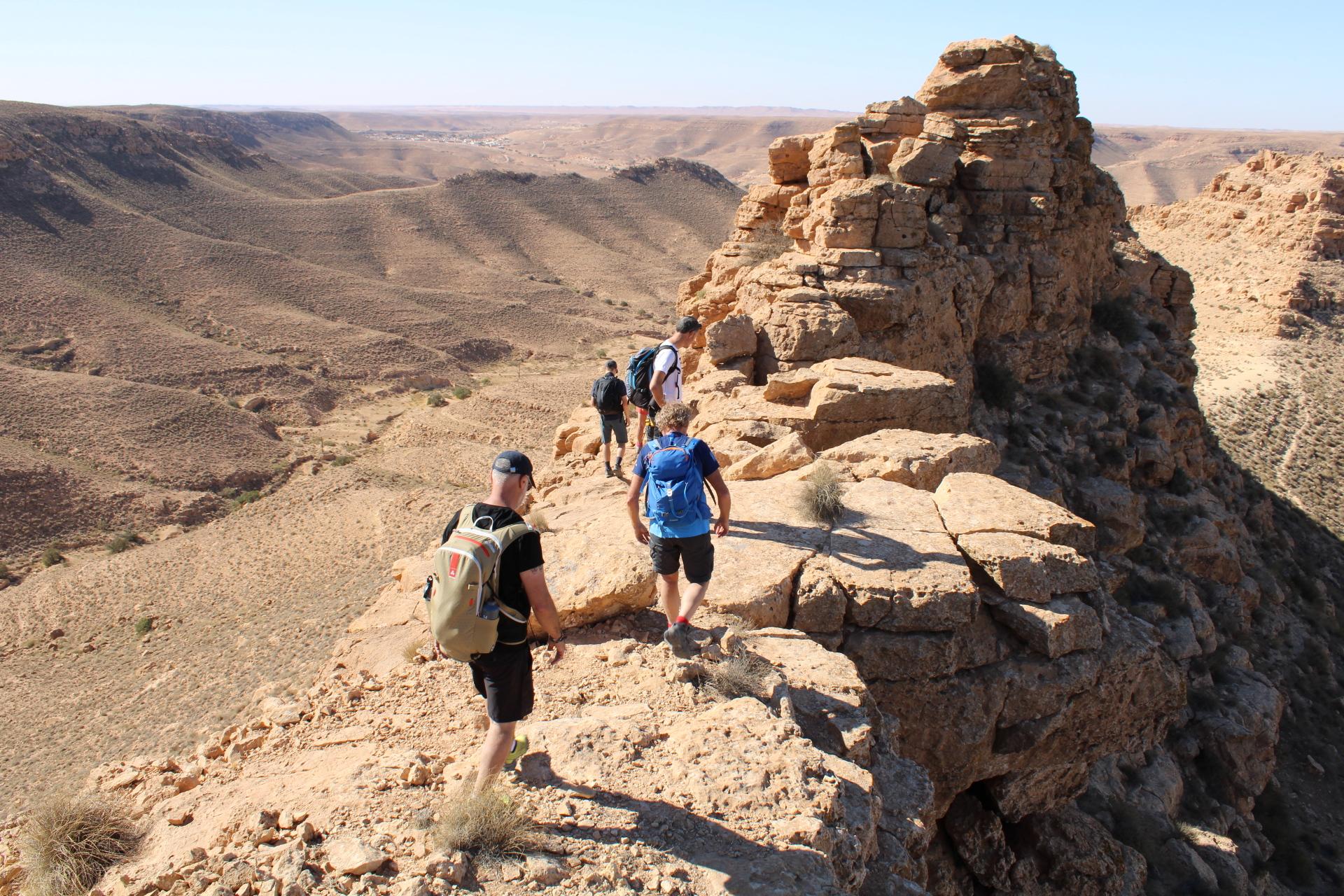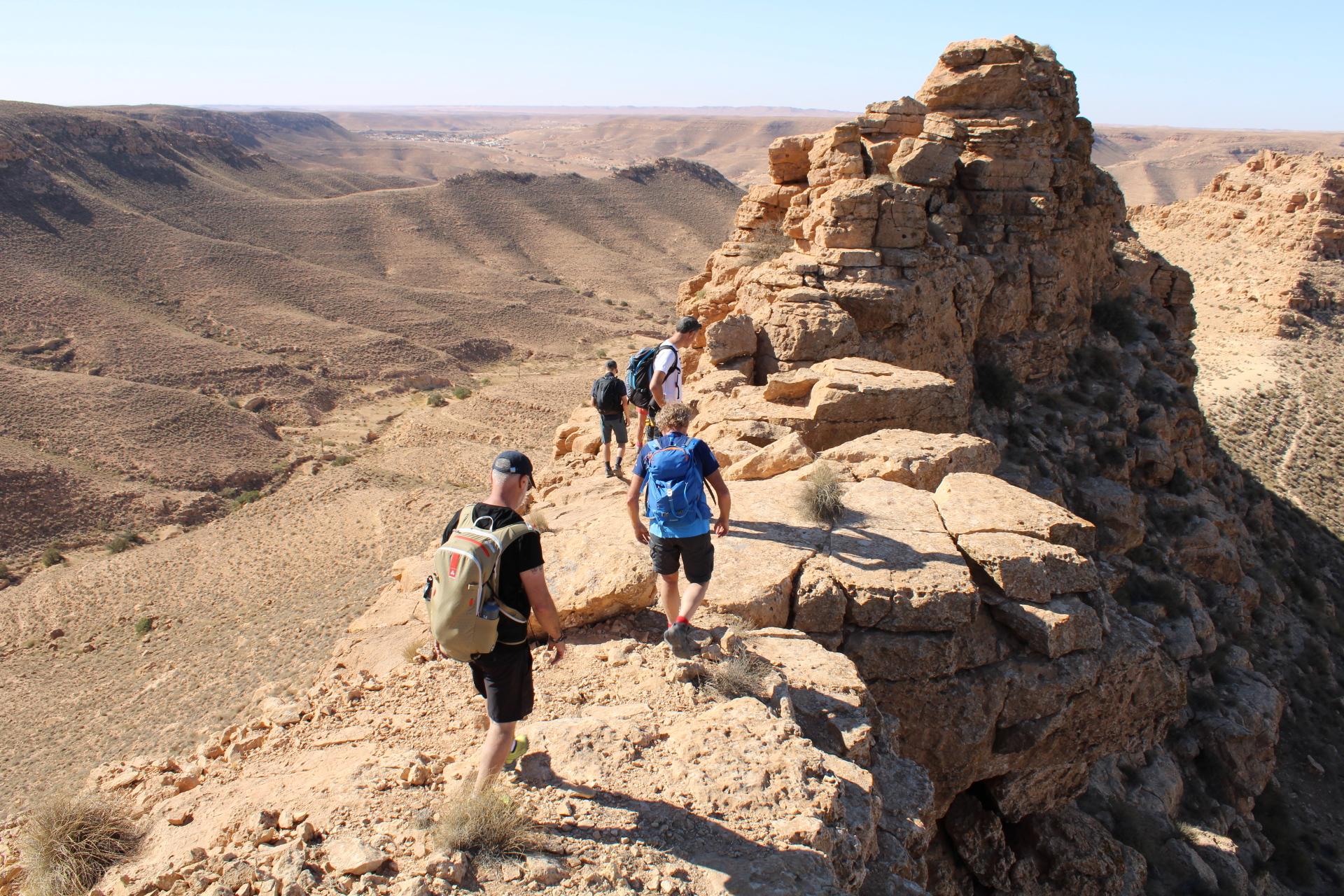
The Great Dahar Crossing is a 120.5 mile (194km) hiking route across the remote Dahar region in southern Tunisia, which is divided into 12 stages.
The trail begins in Tamazrat, a village inhabited by the indigenous Amazigh people, who traditionally lived in underground troglodyte homes carved into the rock - and still do, in Dahar. It winds across stony ‘hamada’ desert and over ochre-coloured peaks, passing through small Amazigh villages surrounded by date palms and olive groves, ancient fortified granaries known as ksours (or ksars), and even fossilised dinosaur footprints.
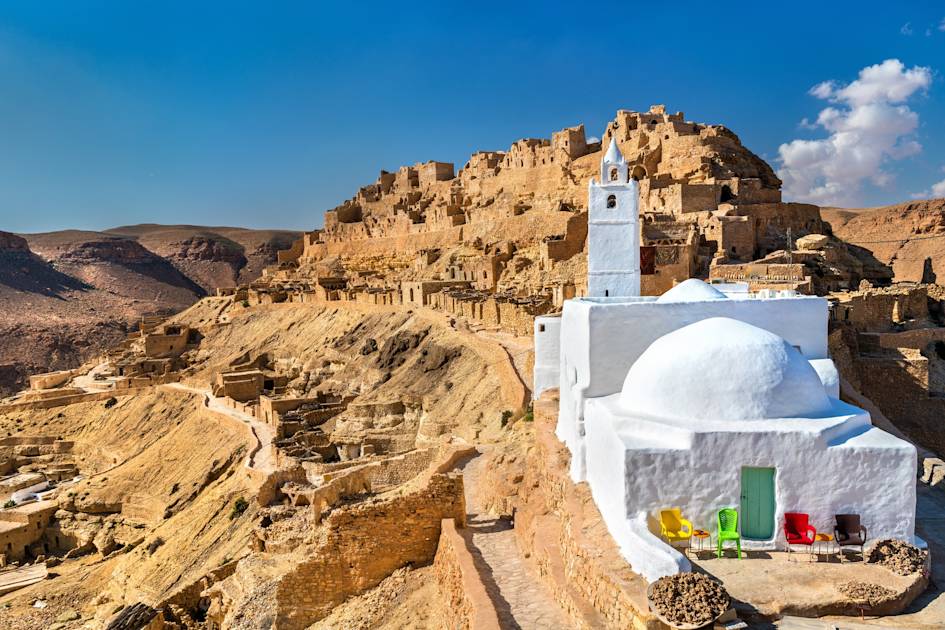
It’s while on the fifth stage of the Great Dahar Crossing that you’ll climb Kaf Ensoura, located in the village of Zmerten. At 713m (2,339ft) it's the highest mountain in the region - upon reaching the top you’ll you'll be rewarded with panoramic views of the surrounding mountains and valleys.
The final stage of the hike takes you from the impressive 12th century ksar of Chenini, which stretches across the tops of two mountains. In the eastern part of the village you'll find the white-washed mosque of the Seven Sleepers in the middle. You’ll hike through an arid landscape of rocky hills and red plateaus dotted by palm, fig, and olive trees, finishing your hike in the troglodyte town of Douiret.
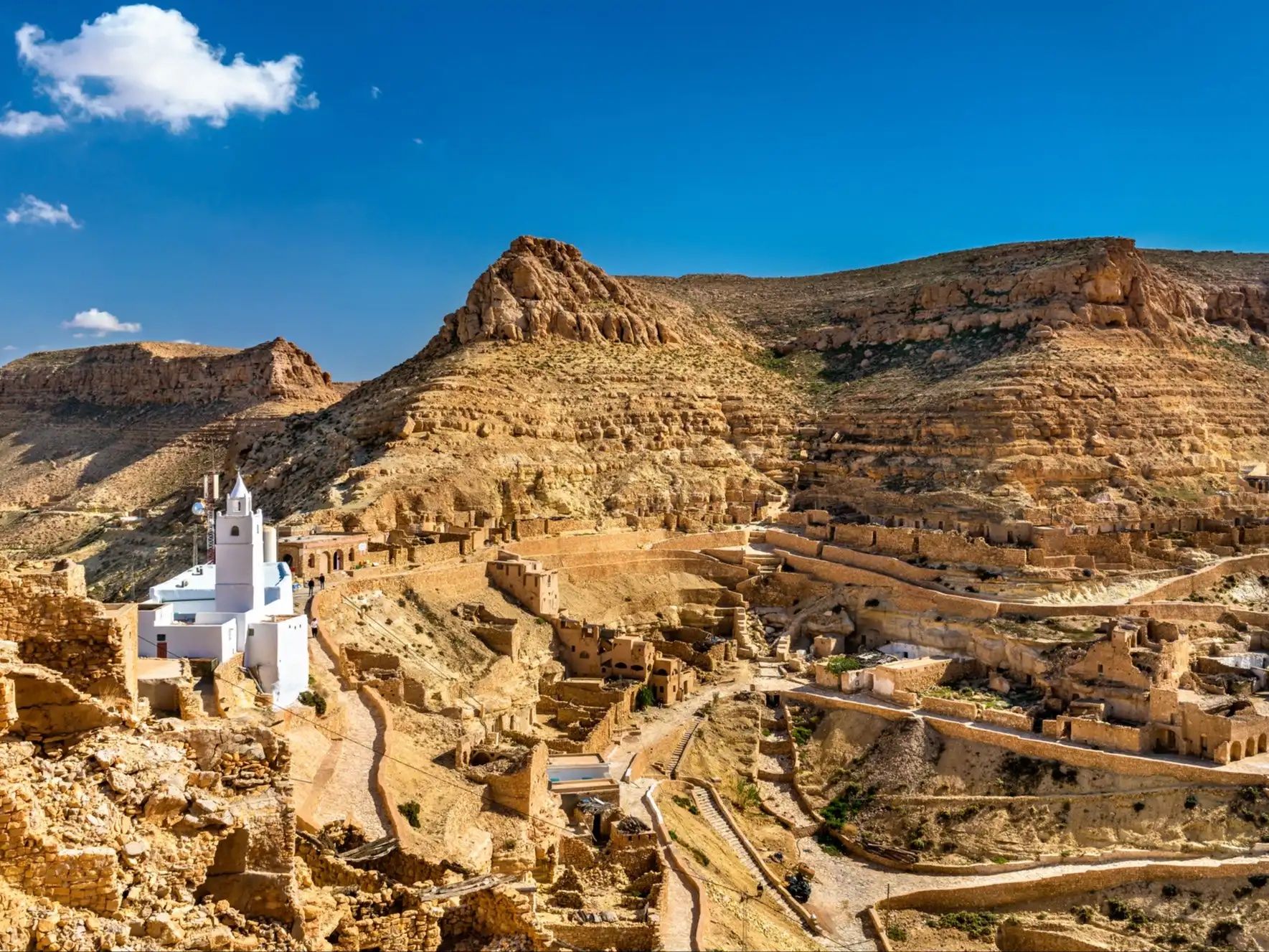
“Crossing the Dahar, you're going to discover the Amazigh villages and learn about their culture,” says tour guide Amor Gharab, who has always lived in the region. “You’ll also discover many archaeological sites, like the ‘ksours’. You'll see many geological sites where dinosaurs were discovered - there are fossils of seashells everywhere in these mountains.”
Amor has two favourite stages within the 12-stage route, which can both be hiked across a day. His first pick is stage four, which stretches for 5.4 miles (8.7km) from Toujane to Zmerten.
There are fossils of seashells everywhere in these mountains
“Almost all the region is populated and it's cultivated by traditional agriculture. But this stage shows the wild nature of the Dahar,” he says. “There are stony hills and deep valleys with a wide variety of aromatic and medicinal plants. Here you’ll find many animals like wolves, foxes, and rabbits. This is also the highest part of the Dahar and it's exposed to humid wind coming from the coast. That's why it's more green and it's more wild than the rest.”
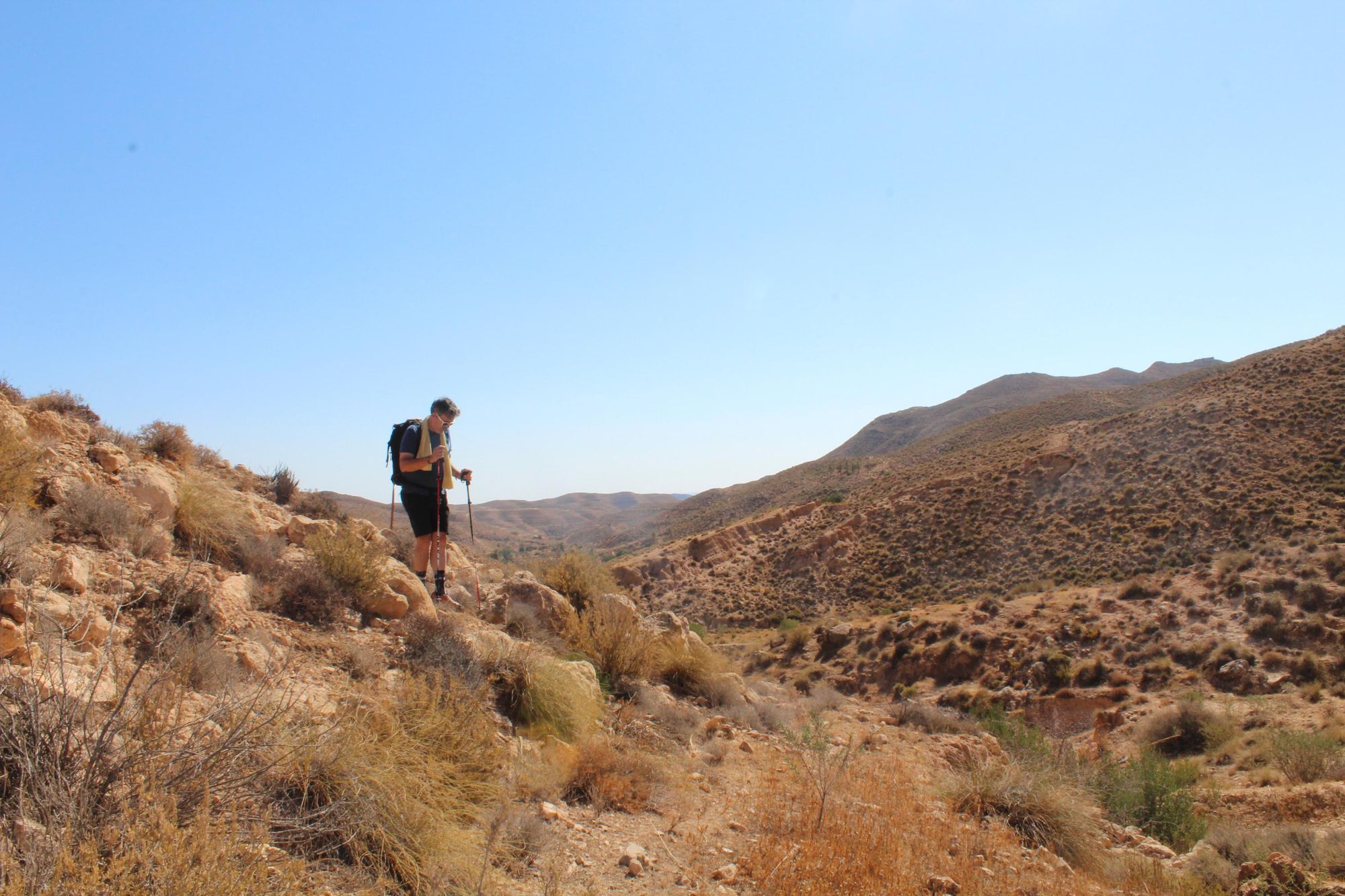
He also recommends stage 11, from the fortified village of Ksar Hadada to Insefri (6.8 miles/11.7km) as one which higlights the diversity of the Dahar region.
“This stage of the trail starts at Ksar Hadada, which is a filming site for Star Wars: The Phantom Menace. And then we cross the valley of Beni Ghdir, where you can see dinosaur’s footprints and many fossils of seashells,” Amor says. “Later, we climb over a mountain for a panoramic view of the old city of Ghomrassen, and then finish the stage in a valley which contains prehistoric rock paintings. It's very rich in history and in archaeological and geological sites."

The trail isn’t currently waymarked - although signposting has been planned for the future - but it is possible to purchase a topographic map and guidebook if you'd like to hike independently. You can also employ the services of a local guide, who is not only familiar with the landscape but also the culture of the region.
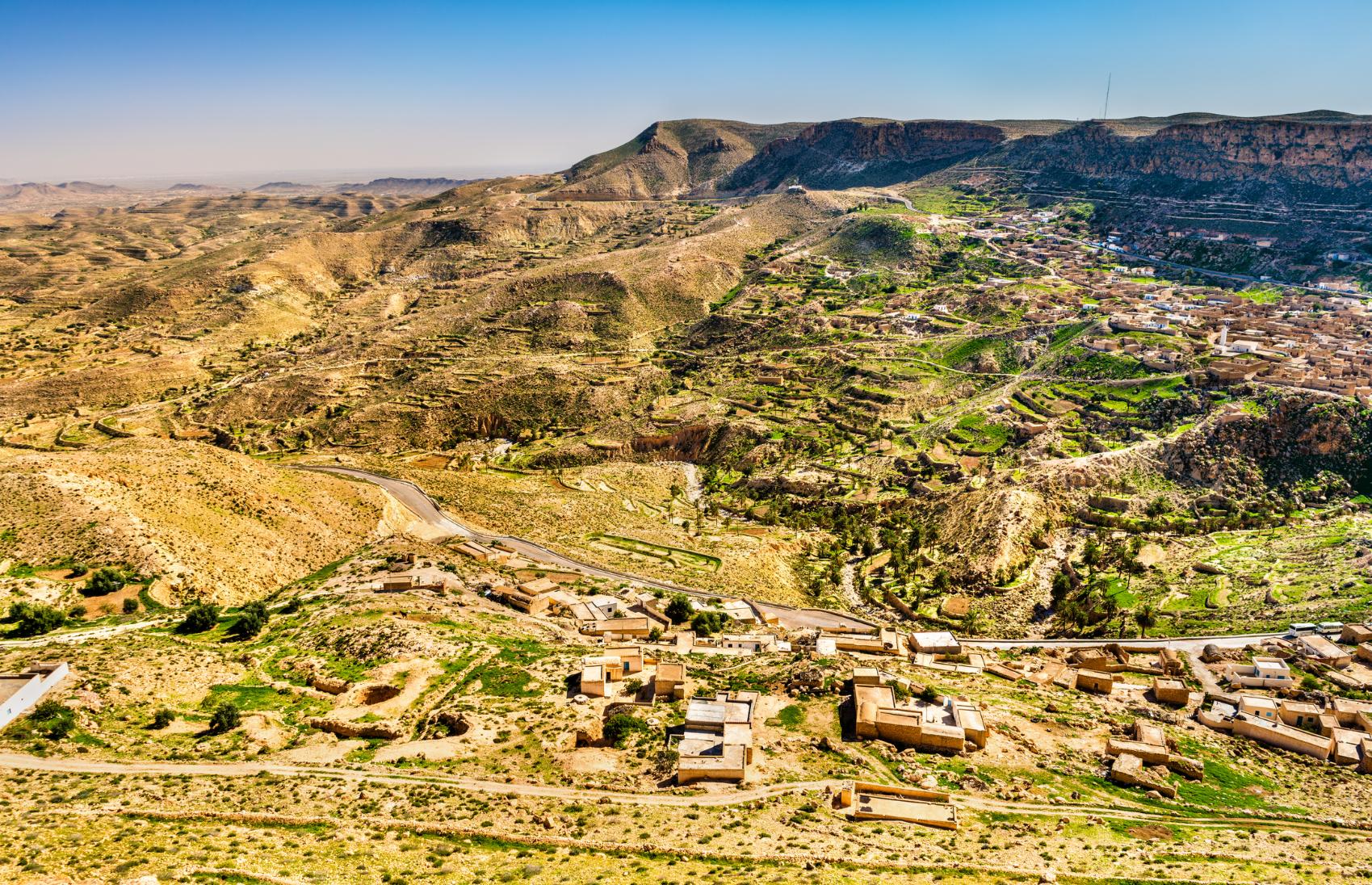
Amor regularly leads travellers on hikes along the Great Dahar Crossing. In fact, he helped create the trail, which came about as a partnership between the Tunisian tourism ministry and Swisscontact to help develop sustainable tourism in the little-known Dahar region.
Until recently, he explains, the Dahar region was somewhere tourists simply passed through on their way from the coast in Djerba to the Sahara Desert destinations of Douz and Tozeur. But since the programme began in 2014, efforts were made to promote Dahar as a sustainable tourism destination, with its own unique cultural offerings.
It has created a different way to discover the region; the hiking trail lets visitors discover its nature, geology and culture - to interact with locals
“I have lived in this region since my birth,” Amor says. “Before 2016, my hobby was to hike in these mountains and cycle in the region. A Swisscontact professional contacted us and asked for our help finding new trails in the region. They suggested they could train us how to use our hobby of hiking to find work as local guides. So we showed them the trails and sites to visit. It was a win-win situation: they discovered more interesting places and trails in the Dahar, and we were trained and became local guides.
“Together, local guides and Swisscontact created a hiking trail to link all the Amazigh villages in these mountains. Later it became the most important part of Dahar as a destination. It has created a different way to discover the region; the hiking trail lets visitors discover its nature, geology and culture - to interact with locals.”
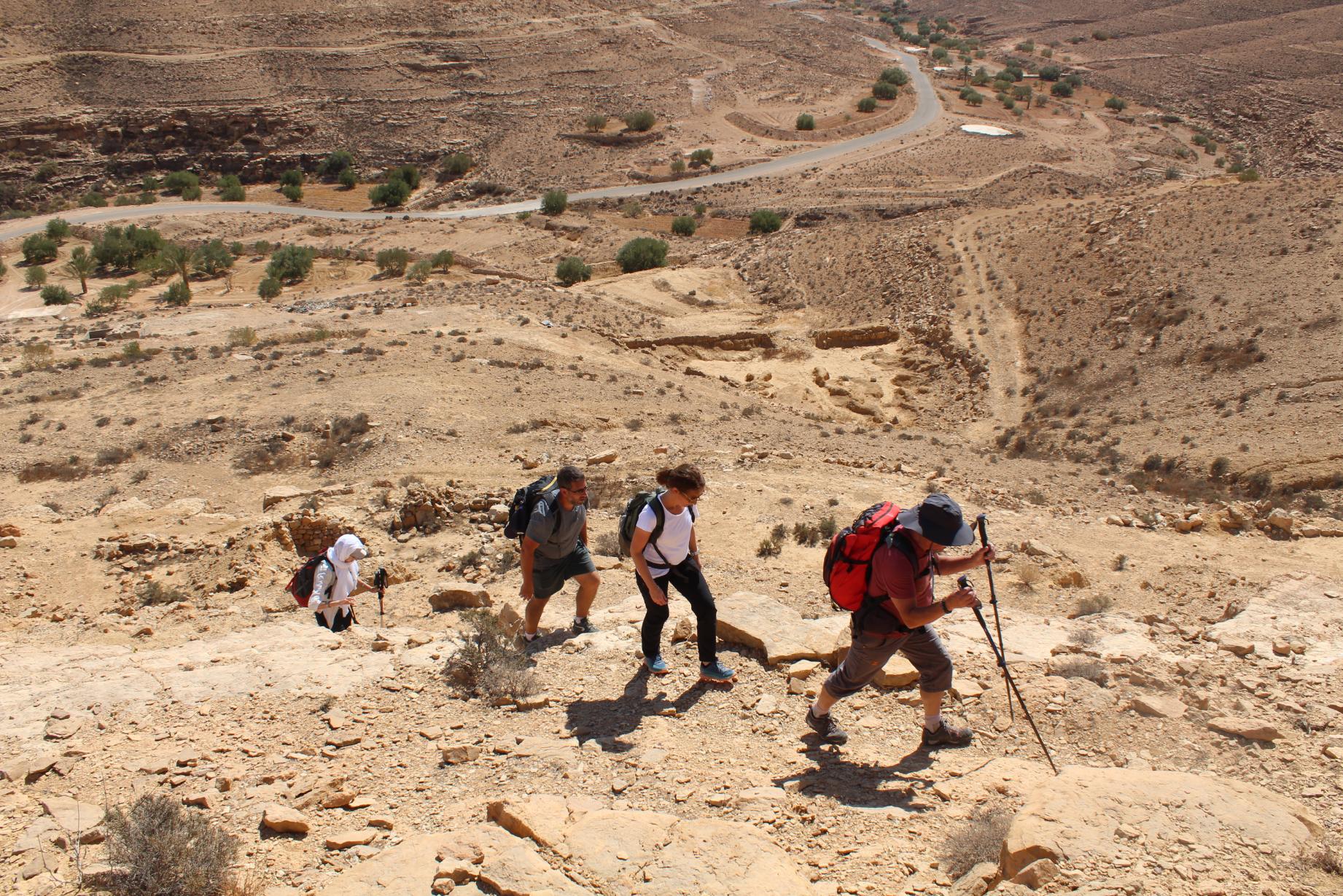
Living and working in the area, Amor has been able to see the beneficial effects of the Great Dahar Crossing. The trail has helped boost the region’s economy. In particular, it benefits local guest houses - which now have an increased number of travellers staying with them - and people like Amor himself, who now makes his living as a hiking guide. But there are other benefits beyond money.

“The Amazigh living in these small towns have become more familiar with tourists and foreigners,” he says. “It's very beneficial for local communities to discover people from other cultures and chat to them - even if they don’t speak the language, just communicating with smiles and small talk.
“And it’s beneficial for the larger region. It’s a group of Amazigh villages that have for centuries lived separate from each other. But the Dahar Great Crossing creates links between us - it makes inhabitants of the Dahar get to know each other and to feel like a big community.”
Feeling inspired? Check out our Hike Desert, Canyons and Berber Villages in Tunisia Adventure, featuring sections of the Dahar Great Crossing.


